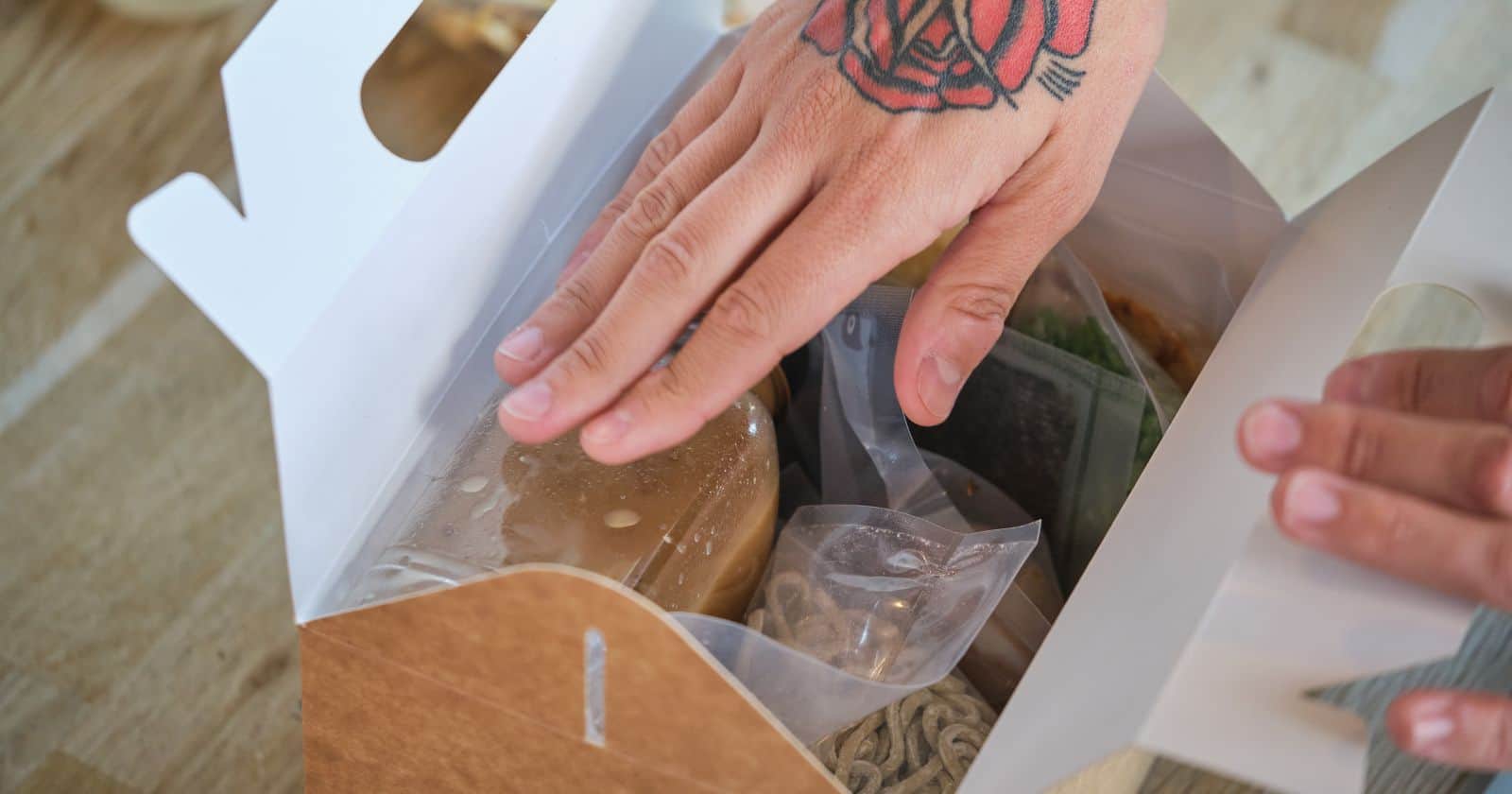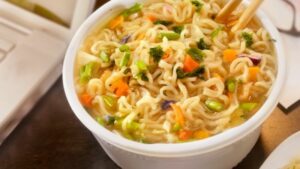Ramen noodles are beloved worldwide for their convenience, customizable flavors, and affordability. But with their reputation as unhealthy junk food, you may wonder what exactly gives instant ramen its bad-for-you status. Is it the white flour noodles, the fatty broth, or those enticing seasoning packets?
The truth is, while no one component makes ramen terribly harmful on its own, together they can add up to a sodium and fat overload lacking key nutrients. However, the #1 worst offender hidden in ramen’s ingredients is its sky-high sodium content.
A single package of ramen can contain over 1600 mg of sodium just from the noodles and seasoning alone. That’s nearly an entire day’s recommended amount in one meal! Consuming this much sodium regularly can raise your blood pressure, increasing risks for stroke, heart disease, and other issues.
So if you’re a ramen fan, it’s smart to be mindful of how frequently you indulge. Here’s a full breakdown of the most unhealthy parts of instant ramen noodles and how to enjoy this iconic food more healthily.
Ramen Nutrition Facts
First, a look at the basic nutrition facts in ramen:
In the noodles:
- Refined wheat flour
- Starch
- Water
- Salt
- Kansui (alkaline minerals)
In the seasoning:
- Salt
- Sugar
- MSG
- Sodium carbonate
- Artificial flavors, oils
- Dried veggies, powders
Macronutrients per serving:
- Calories: 280-400
- Carbs: 55g
- Fat: 10g
- Protein: 8g
So where exactly does ramen go wrong for your health? Let’s explore the biggest culprits.
High Sodium Content
By far, the #1 unhealthy aspect of ramen is its whopping sodium content.
A single pack of ramen contains around 1600-1800 mg sodium. That’s nearly the entire daily recommended amount in one meal.
Consuming this much sodium regularly can lead to:
- High blood pressure
- Stroke
- Heart disease
- Kidney problems
- Water retention
- Stomach cancer
The sky-high sodium mainly comes from:
- Salt in the noodles
- Seasoning powder
- Flavoring packets
Too much sodium is incredibly hard on your body long-term. So this is likely the unhealthiest part of eating ramen often.
Refined Carbs and Few Essential Nutrients
Beyond just calories, ramen noodles lack nutrients your body needs:
- Protein: Ramen is very low in protein for a meal. The lack of protein and amino acids can make you feel hungry again soon after eating.
- Fiber: With refined white flour noodles, ramen has barely any fiber. This can cause blood sugar spikes and digestive issues.
- Vitamins and minerals: Ramen is devoid of important vitamins like A, C, E along with minerals like iron, calcium, and potassium.
- Healthy fats: Ramen contains almost zero heart-healthy fats like the omega-3’s found in fish and avocados.
So in essence, ramen is almost all carbs and sodium with very little nutrition. Eating it frequently can lead to malnutrition and related issues over time.
High Saturated Fat Content
While not all ramen is fried, the noodles are often cooked in palm oil or other fats high in saturated fats. Too much saturated fat can raise “bad” LDL cholesterol levels in your blood. This increases risks for:
- Heart disease
- Stroke
- Heart attacks
- High blood pressure
Frying also adds more calories. So saturated fat content is another nutrition drawback of regular ramen consumption.
Take a Look at Kansui
Kansui is generally considered safe and not bad for health when consumed in moderation as part of ramen noodles. Here is some more information about kansui and its health effects:
What is Kansui?
- Kansui is an alkaline solution added to ramen noodles and some types of Chinese noodles.
- It is made from a mixture of potassium carbonate and sodium carbonate.
- Kansui gives noodles their characteristic yellow color and springy, firm texture.
Is Kansui Bad for Health?
- In the small amounts used in ramen, kansui is not considered harmful to health.
- Both potassium carbonate and sodium carbonate are approved food additives by the FDA and food regulatory agencies in Japan and China.
- The minor amount of kansui in a portion of ramen provides only a tiny amount of sodium and potassium that get absorbed when eaten.
- People with sodium-restricted diets may need to limit ramen intake due to the sodium from kansui. But kansui itself is not deemed unhealthy.
- There are no studies showing kansui causes negative health effects for the general population at usual ramen consumption levels.
- Eating extremely high amounts of pure kansui would be inadvisable. But ramen contains only trace residues of kansui after manufacturing.
Potentially Harmful Preservatives
Some ramen brands use the preservative tertiary-butyl hydroquinone (TBHQ) to prolong shelf life. Studies on TBHQ at high doses show it may cause:
- Nausea and vomiting
- Abdominal pain
- Vision disturbances
While TBHQ is considered safe in small amounts, regular intake is not advised. Check brands and avoid those listing TBHQ in ingredients.
Signs You’re Eating Too Much Ramen
If you frequently experience any of the following, it may indicate you’re overdoing it on the noodles:
- High blood pressure or heart issues
- Constant cravings and hunger
- Malnutrition symptoms
- Digestive problems
- Weight gain
- Migraines or headaches
- Fatigue or weakness
- High cholesterol
- Brain fog or concentration issues
These can all result from the long-term effects of too much sodium, fat, and carbs combined with nutrient deficiencies. Listen to your body!
Healthier Instant Noodle Alternatives
Thankfully, healthier ramen options exist! Look for brands with:
- Less than 800mg sodium
- Added protein and fiber
- No TBHQ or artificial flavors
- Organic or natural ingredients
- Brown rice or quinoa noodles
- Real powdered veggies and herbs
Or branch out and try alternatives like:
- Kelp noodles
- Shirataki noodles
- Zucchini noodles
- Banza chickpea pasta
- Edamame pasta
You can still get your noodle fix without all the unhealthy extras. Explore better-for-you instant and fresh noodle options.
Takeaways
At the end of the day, ramen in moderation can be fine as part of an overall healthy diet. But regularly eating it multiple times a week can take a toll on your health over time.
Limit high-sodium, low-nutrition options and experiment with healthier varieties and fresh noodle alternatives. Your body will thank you!





